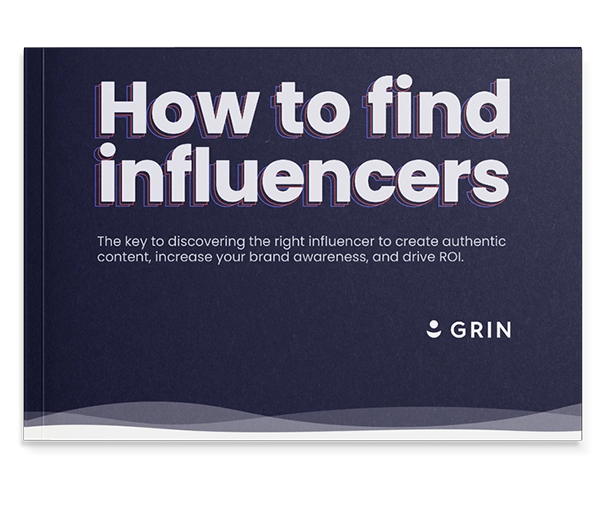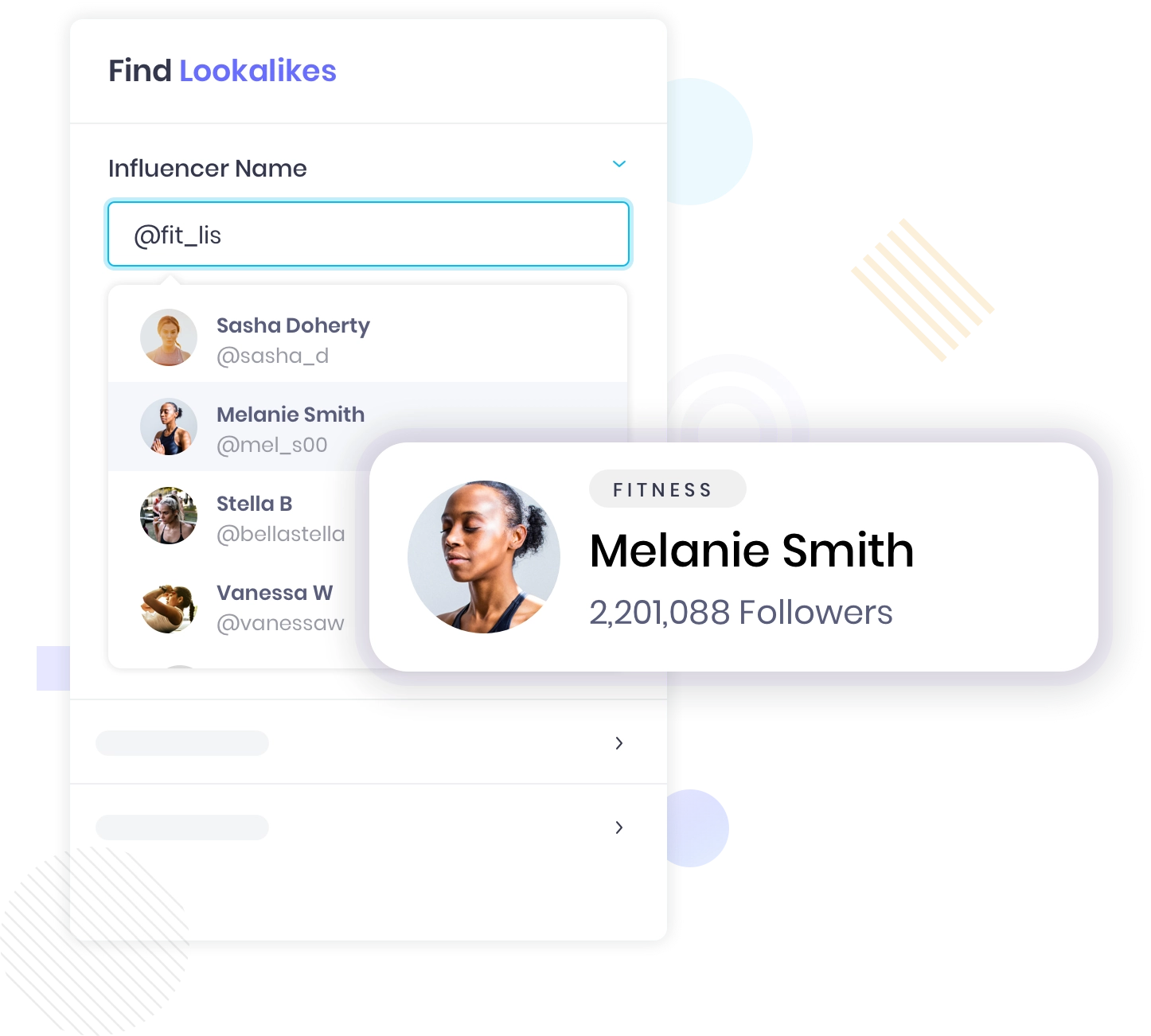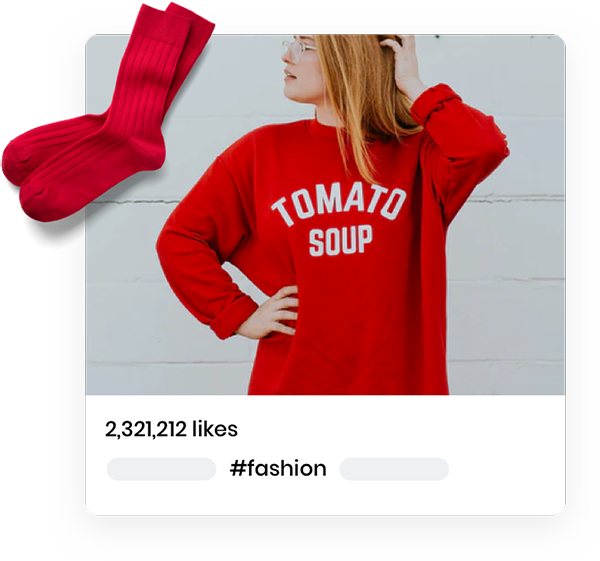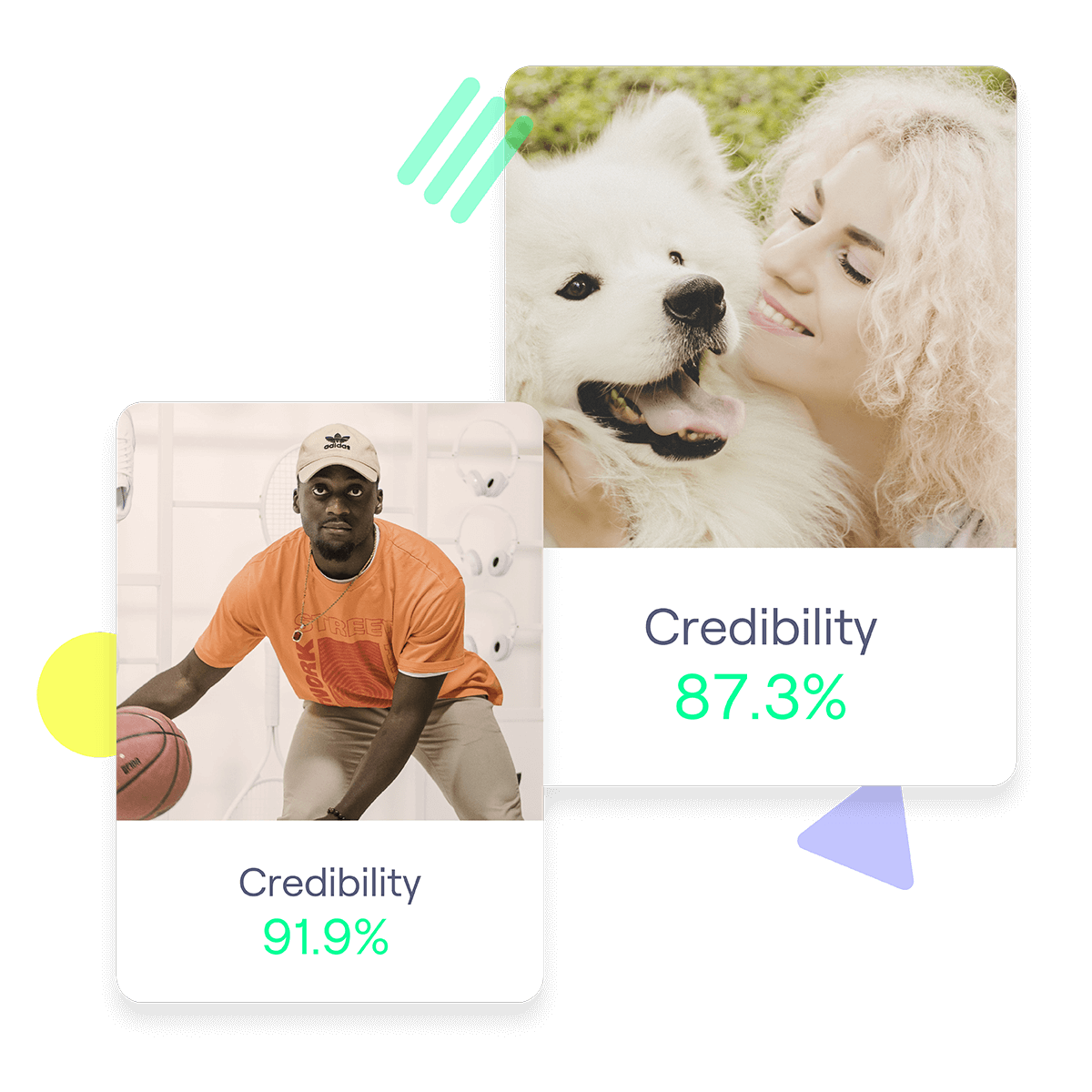It’s not always follower count that brings in the revenue. Try our free comparison tool to check out creator engagement rates and metrics that help you find the right creators to partner with.
Check Out Tool
Knowing what kind of creator your brand needs can have significant positive effects on your influencer marketing campaign ROI. In general, there is no one creator type better than another – so much rides on you understanding your marketing goals before launching an influencer campaign.
But there exists a “watershed” of sorts between large and small-audience creators. And that line occurs between micro influencers and macro influencers. By comparing key performance and value metrics, you can better inform your recruiting efforts and tailor your program to accommodate your marketing mix.
This micro-macro comparison generator is completely free, but these numbers do not guarantee creator performance.

Want more info? Get top metrics for these influencers

The simplest and most popular way to categorize creator types is by comparing follower counts. By defining each creator type – along with their strengths and weaknesses – you’ll know how to refine your recruiting efforts.
Nano influencers are creators who manage online communities of 1,000 to 10,000 followers.
A thousand followers is typically the threshold at which a social media creator may call him/herself an influencer. Some nano influencers are on their way to becoming micro or macro influencers, while many remain within this category due to the fact that their content is unusually specific.
Nano influencers enjoy smaller audiences compared to their peers in other categories. As such, these creators usually enjoy deeper connections with a larger percentage of their audience. Among their strengths are driving sales, ongoing user-generated content, and general conversions.
While nano influencers will certainly increase brand awareness among their followers, you’re not likely to gain significant brand awareness due to the limited size of a nano influencer’s audience.
Micro influencers are creators who manage online communities of 10,000 to 100,000 followers.
According to most experienced influencer marketers, micro influencers are the “sweet spot” of brand-creator partnerships. They have a large enough audience to publicize brands well, but their community is small enough to still maintain relationships with a decent percentage of their followers.
As such, micro influencers are great at converting customers, answering product questions, driving website traffic, and more.
Macro influencers are creators who manage online communities of 100,000 to 1,000,000 followers.
Most creator relationship managers approach macro influencers differently than they do creators with smaller audiences. That’s because once a social creator reaches more than 100,000 followers, they’re most likely famous within their industry.
Macro influencers can create significant brand awareness due to their sizable following. As such, many brands use these creators to help them launch new products, test them, or give online shoutouts for sales or events.
It’s not unusual for macro influencers to have lower engagement rates than micro and nano influencers. But that doesn’t mean that they haven’t nurtured meaningful relationships with their followers – just that they manage more of them, and it’s not as easy to engage all or most of them.
Celebrity or mega influencers are creators who manage online communities of 1 million or more followers.
Once a creator has more than one million followers, they are considered celebrity or mega influencers. These creators are often professional athletes, performers, or industry thought leaders.
When a celebrity mentions your brand, everyone will hear about it. In a campaign with one of these creators, you can go from completely unknown to well-known pretty quickly. However, these creators are expensive.
Furthermore, celebrity creators may not drive the kind of conversions you need if that is your main marketing objective. But for getting the word out, celebrity influencers will produce incredible results.
Knowing influencer categories is the first step to comparing creators. But just because a creator falls within the same category doesn’t mean that they perform as well as their peers. Here are three ways to compare creators:
The simplest metric to compare one creator to another is by follower count. The categories above do this automatically.
However, even within a single influencer category, there is a range of followers. For example, some micro influencers only serve 15,000 followers, while others maintain audiences of 80,000. Among macro influencers, the range is even more dramatic with some macro influencers managing 150,000 followers and another 800,000 followers.
Noting these follower count differences within each category can help you forecast the impact of your influencer marketing campaign.
Arguably the most important creator metric today is engagement rate. An engagement occurs when a follower interacts with an creator post. These interactions include post likes, comments, shares, and any other social platform-specific engagement feature.
“Engagement metrics do not guarantee influencer results, but they can signal the value of that influencer’s social influence. These metrics also signal influencer authenticity, both of which typically contribute to high conversion rates during influencer campaigns.” – How to Measure Social Influence
In general, it’s best to calculate engagement based on comments and shares over post likes. When examining a prospective creator closely, you should take a look at the quality of engagement. Fake influencers will attempt to buy likes for their account and posts to give the wrong impression. But if you take a look at the comments, you’ll know pretty quickly whether or not that creator has a real connection with their audience.
Earned media value (EMV) tells you what your – or in this case, a creator’s online presence is worth within your industry. This metric takes into account every third-party mention or engagement, such as user-generated content, organic growth, and publicity.
“The basis for EMV lies in understanding what effect a brand’s marketing decisions and public image have on their prospects. Rather than spend a ‘dollar to get a dollar,’ mature marketers want to spend a dollar to set off a chain reaction of positive buyer feedback.” – Quick Guide to Earned Media Value & Influencer Media Value
In most cases, marketers use EMV to establish the value of their own brand across their various owned media channels. But in the case of influencer marketing, marketers try to establish the EMV of prospective creators, or influencer media value (IMV).
“In short, IMV should demonstrate a comparable ROI to paid media. For example, an IMV of $100 indicates that your influencer marketing results generated what you could expect to achieve by spending $100 on digital ads. If you spent less than $100 on that particular influencer campaign, then you’ve achieved a positive ROI and better results than if you had spent those dollars on ads.” – Quick Guide to Earned Media Value & Influencer Media Value
When applied to creators, EMV can help your brand understand two things:
Our free comparison tool above provides estimates of how well two creators are likely to perform. You can examine follower counts, engagement rates, and EMV side-by-side to help you plan your influencer marketing budget and launch your recruiting efforts.
Many brands set baseline parameters for their creator team. For example, creators must have a minimum engagement rate and number of followers.
But after you establish those parameters, it’s still important to take a close look at the creator you’re interested in. Each creator has their own style and set of values. You want to be a good match with this creator, ensuring that there is audience alignment and brand compatibility.
If you’re new to influencer marketing or trying to improve your existing program, our free comparison tool will help you narrow your focus and define your goals. Regardless of what tools you use, it’s critical that you track your influencer campaigns carefully.
Tracking creator performance will show you the best creators for your brand, as well as which types of content will connect well with your audience. Using the comparison tool above can show you which metrics and qualities regularly translate into positive creator ROI.






Whether you are just getting started with influencer marketing or already have your program in place, this guide gives you the tools to get the return on investment your C-level will love.
In the meantime, use our Web Extension to analyze profiles in those platforms.
In the meantime, try using our Web Extension to analyze profiles.